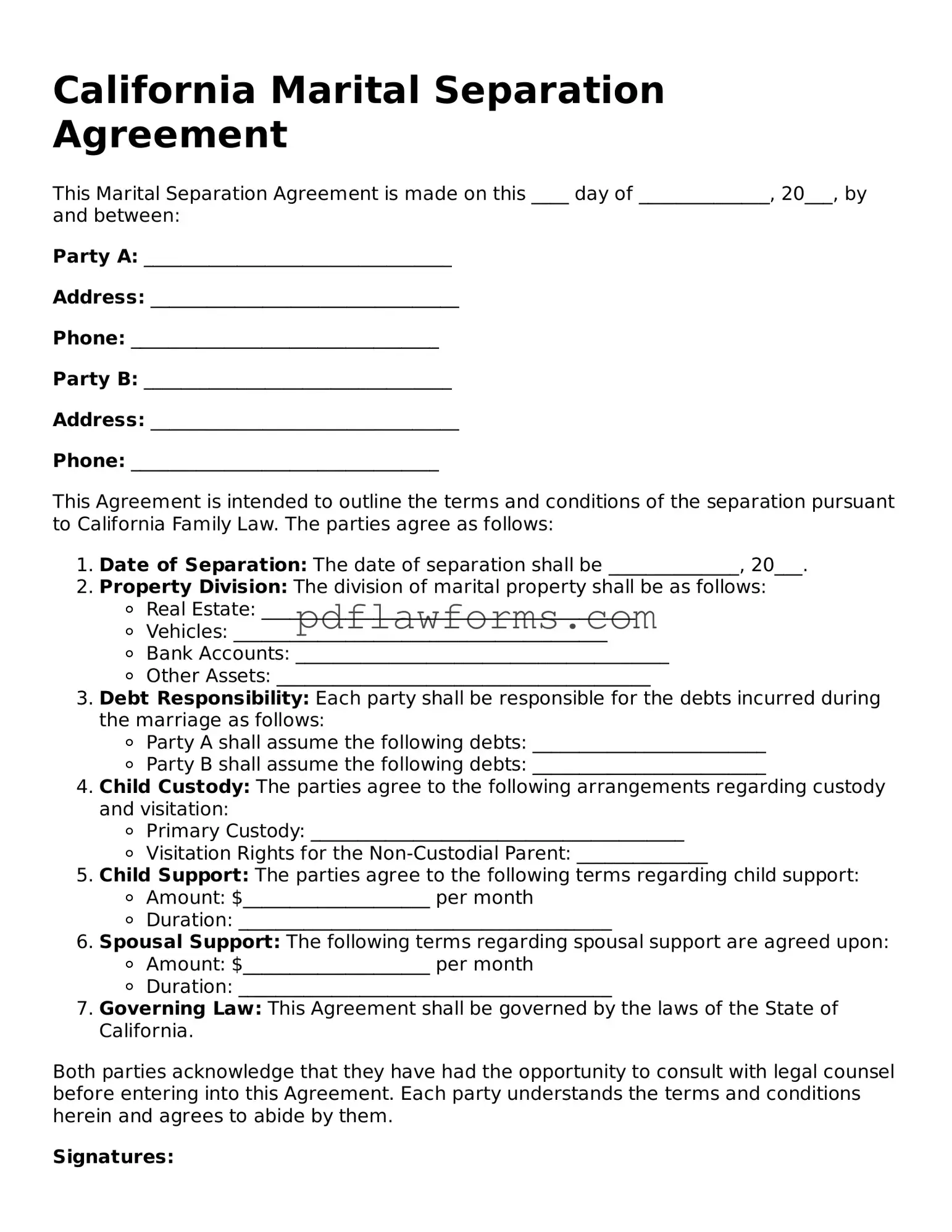When completing the California Marital Separation Agreement form, individuals often make several common mistakes that can lead to complications in the separation process. Awareness of these pitfalls can help ensure that the agreement is valid and enforceable.
One frequent error is failing to fully disclose all assets and liabilities. It is crucial for both parties to provide a complete picture of their financial situation. Omitting information can lead to disputes later on, as undisclosed assets may surface after the agreement is signed.
Another mistake involves not specifying the terms of child custody and support clearly. Vague language can create confusion and disagreements in the future. Detailed provisions regarding visitation schedules and financial support obligations are essential for clarity.
People sometimes neglect to address spousal support in their agreements. If one party may be entitled to support, it is important to include this aspect in the document. Leaving it out can result in a loss of rights to future financial support.
Additionally, some individuals fail to consider tax implications related to the division of assets. Certain transfers may have tax consequences that can affect both parties. Consulting a financial advisor or tax professional can provide valuable insights.
Inaccurate or incomplete information regarding debts is another common issue. Both parties should ensure that all debts are accounted for and properly assigned in the agreement. This can help prevent future liability disputes.
Moreover, some people overlook the importance of having the agreement notarized. While notarization is not always required, it can add an extra layer of authenticity and may be beneficial if the agreement is challenged later.
Another mistake is not reviewing the document thoroughly before signing. It is advisable for both parties to read the agreement carefully and understand all terms. Misunderstandings can arise from rushed or inattentive readings.
Failing to seek legal advice can also be a significant oversight. While individuals may feel confident in their ability to negotiate terms, a legal professional can provide guidance and ensure that the agreement complies with California laws.
Lastly, some individuals may not update their agreements after significant life changes. If circumstances change, such as a new job or the birth of another child, it is essential to revisit and potentially revise the agreement to reflect those changes accurately.
